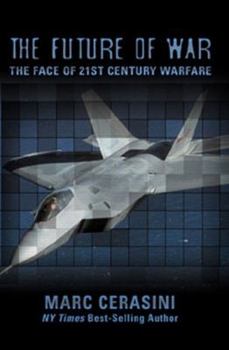The Future of War: The Face of 21st- Century Warfare: The Face of 21st- Century Warfare
Select Format
Select Condition 
Book Overview
No Marketing Blurb
Format:Paperback
Language:English
ISBN:002864431X
ISBN13:9780028644318
Release Date:December 2002
Publisher:Alpha Books
Length:243 Pages
Weight:0.72 lbs.
Dimensions:0.6" x 6.0" x 9.0"
Customer Reviews
2 ratings
After all, this is a good book.
Published by Thriftbooks.com User , 18 years ago
I read this book, here in Brazil.It's a book about future of wars.It has many chapters and parts about such things as Infantry of the future, future of air combat,etc.This book is very good to read. I won't give it the five strars, because this book also has some absurds.To exemple, at page 45, this book claims that:"in fact, the foot soldier of very near future might carry more firepower than an M1A1 Abrams".Oh, it's obvious that even using a exoskeleton, a foot soldier will not have a firepower of more than 10 tons from a M1A1 Abrams 120 mm cannon.The Abrams itself weights more then 65 tons. Even with little failures, after all, this is a good book.
A fascinating overview of what is ahead for warfare techno
Published by Thriftbooks.com User , 21 years ago
If one counted the number of people throughout history that have perished in wars, the number would be very small if compared to the total number of people who have not. Therefore, the impact of war has been minimal in this respect, eliminating of course consideration of the devastating psychological and economic impact that wars bring to human cultures (even if they do not directly participate in the war at hand). The author of this book gives the reader a vision of the technology that will be used in future conflicts, and the prospects are fascinating if viewed in the abstract, i.e. if one's memory is temporarily blocked to the pain that this technology will bring to the enemy. Fortunately, this same technology will have peaceful applications, and result in more of a benefit to humankind, rather than its destruction. To quote the passage the author uses to introduce the book: "The future's so bright, I gotta wear shades..." That humanity is tied together by increasing globalization and makes everyone vunerable to everyone is the author's starting point in the book. Violent perturbations in a small region of the world may have significant impact in regions geographically far apart from it. No citizen of the planet, American or otherwise has the luxury of "sitting out" what may at first seem to be small "isolated" wars, argues the author. The author's emphasis is primarily on the role of the United States in future conflict. He gives a fair and accurate overview of the miliary history of the United States. Americans have always avoided conflict unless absolutely necessary, and the American soldier has in general never been viewed as "cannon fodder". General Norman Schwarzkopf once said that "any commander not concerned with casualties does not deserve to wear the American uniform". This emphasis on the minimization of casualities is the main reason for the incredible technological advancements made in weaponry in the United States. The author cites the Gulf War as being the perfect example of how advanced technology can defeat a vast army with a small number of casualties. An entire chapter of the book is devoted to the technology used in the Gulf War. With a war in Iraq perhaps just a week away, the minimization of casualties will still be held as an axiom, fortunately. Some of the more interesting developments that the author foresees for fighting the wars of the 21st century include: 1. The gun, the history of which he outlines briefly, will no longer be dependent on the physics of projectile motion. Instead, the "bullets" will precision-guided, along the lines of the cruise missiles currently employed. Firing around corners will thus be a reality. 2. Chemicals that can solidify the fuel inside the tank of an enemy vehicle. 3. Bacteria that can decompose rubber tires. 4. Mines that recognize enemy vehicles and consequently destroying them. 5. Weapon systems packed with artificial intelligence, allowing them to be self-launching. 6. Uniforms






